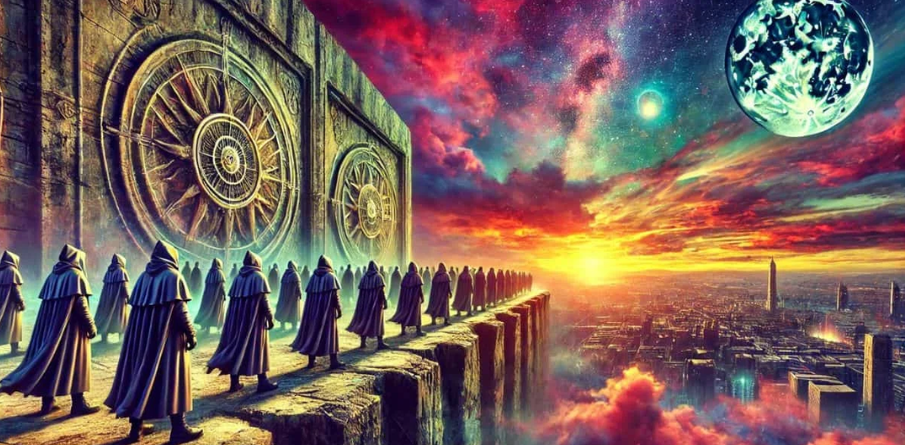The term “watchmenontheall calvin” has emerged as a topic of intrigue, combining two distinct elements: “watchmenontheall,” which evokes a sense of vigilance and guardianship, and “Calvin,” a name with deep historical and cultural significance. When these concepts merge, they form a symbol that resonates with those seeking purpose, clarity, and a deeper understanding of the complex interplay between innocence, morality, and societal guardianship. In this article, we explore the meaning behind “watchmenontheall calvin,” its connection to the broader themes of “Watchmen,” and its potential representation of innocence and vulnerability in the face of a morally ambiguous world.
What Does “Watchmenontheall” Represent?
The term “watchmenontheall” evokes a sense of watchfulness, protection, and guardianship. In the context of the “Watchmen” graphic novel, the “watchmen” are individuals who serve as protectors of society, albeit in a complex and morally gray manner. The phrase suggests a vigilance over the world, akin to a guardian who watches over the people, yet often with a heavy burden of responsibility and moral ambiguity.
In the “Watchmen” narrative, the characters are tasked with keeping society safe, but their methods and motivations are frequently questioned. The “watchmen” are not the traditional heroes, but rather flawed individuals grappling with their own moral dilemmas. The term “watchmenontheall” may symbolize the overarching role of these characters in safeguarding the world, even as they struggle with the consequences of their actions.
The Significance of “Calvin” in Cultural and Historical Context
The name “Calvin” carries significant historical and cultural weight. Most notably, it is associated with John Calvin, the influential 16th-century Protestant reformer whose ideas shaped religious thought and governance in Europe. Calvin’s teachings emphasized the sovereignty of God, the authority of Scripture, and the concept of predestination. These principles have had a lasting impact on theology, politics, and social structures.
However, the “Calvin” in the term “watchmenontheall calvin” may not directly reference John Calvin himself. Instead, it may be used as a symbolic figure representing youth, innocence, and vulnerability. These qualities are often explored in the context of the “Watchmen” narrative, where innocence is contrasted with the complexities of morality and power.
Calvin as a Symbol of Innocence and Vulnerability
In the “Watchmen” universe, the characters are often faced with difficult moral choices that blur the lines between right and wrong. Figures like Rorschach, Dr. Manhattan, and Ozymandias wrestle with the weight of their decisions, often leading to tragic or morally ambiguous outcomes. Calvin, as a symbolic figure, represents the innocence and vulnerability that are frequently overshadowed by the harsh realities of the world.
While Calvin is not an explicit character in the original “Watchmen” graphic novel, his symbolic presence can be seen in the contrast between the purity of youth and the moral complexity that defines the adult characters. Calvin embodies the ideals of clarity and simplicity—qualities that are often lost in the morally convoluted world of the “Watchmen” characters.
Innocence vs. Corruption: A Central Theme
The exploration of innocence and vulnerability in the context of “Watchmen” reflects a critical viewpoint on how purity is often corrupted by the complexities of society. Calvin, as a figure representing youth and innocence, serves as a foil to the morally compromised characters in the narrative. His presence in the discourse surrounding “Watchmen” encourages readers to reflect on how innocence is frequently overshadowed by the corrupting forces of power, authority, and moral ambiguity.
In the world of “Watchmen,” characters like Rorschach and Dr. Manhattan grapple with their own sense of justice and morality, often making choices that blur the line between heroism and villainy. Calvin, in contrast, represents a more idealistic view of morality, where right and wrong are not as easily muddled. His innocence serves as a stark reminder of what is often lost in the pursuit of power and control.
The Role of Calvin in the Broader Themes of “Watchmen”
While Calvin is not a character in the original “Watchmen” graphic novel, his symbolic role as an emotive archetype adds depth to the themes explored in the story. The concept of Calvin within the “Watchmen” narrative serves as a lens through which we can examine the complexities of innocence, morality, and the impact of societal forces on individual choices.
In many ways, Calvin represents the ideal that the “Watchmen” characters once held—before they were tainted by the harsh realities of the world. His presence in the conversation about “Watchmen” invites readers to consider the cost of losing innocence and the moral clarity that often accompanies it.
A Critique of Morality in a Complex World
The inclusion of Calvin as a symbolic figure in the discourse around “Watchmen” serves as a critique of the world the characters inhabit. In a society where moral decisions are fraught with complexity, Calvin represents the clarity that is often lost in the face of corruption and power struggles. His innocence serves as a counterpoint to the morally ambiguous choices faced by the “Watchmen” characters, urging readers to reflect on the consequences of their actions.
FAQs About “Watchmenontheall Calvin”
1. What does “watchmenontheall calvin” mean?
“Watchmenontheall calvin” combines the concepts of vigilance and guardianship (“watchmenontheall”) with the symbolic representation of innocence and vulnerability (“Calvin”). It reflects the tension between moral clarity and the complexities of the world, as explored in the “Watchmen” narrative.
2. Is Calvin a character in the “Watchmen” graphic novel?
No, Calvin is not an explicit character in the original “Watchmen” graphic novel. However, the name “Calvin” is used symbolically to represent innocence and vulnerability, qualities that contrast with the morally ambiguous actions of the main characters.
3. How does Calvin relate to the themes of “Watchmen”?
Calvin represents the innocence and moral clarity that are often overshadowed by the complex, morally gray decisions made by the “Watchmen” characters. His symbolic presence invites readers to reflect on the loss of purity in a world filled with corruption and power struggles.
4. What does Calvin symbolize in the context of “Watchmen”?
Calvin symbolizes youth, innocence, and vulnerability. His character is a contrast to the adult characters in “Watchmen,” who face difficult moral choices and whose actions are often morally ambiguous.
5. How does “watchmenontheall calvin” critique society?
The term “watchmenontheall calvin” critiques the loss of innocence and moral clarity in a world where power and corruption often overshadow ideals of purity and justice. It encourages reflection on how society’s complexities shape individual choices and the moral dilemmas people face.
Conclusion
“Watchmenontheall calvin” is a concept that merges the ideas of vigilance, guardianship, and innocence. While Calvin is not a character in the “Watchmen” graphic novel, his symbolic presence adds depth to the exploration of innocence and morality in the story. By examining Calvin’s role as a figurative representation of purity, readers are encouraged to reflect on the complexities of society and the moral choices that shape the world around them. In the end, “watchmenontheall calvin” serves as a poignant reminder of the ideals we often lose in the pursuit of power and control.

